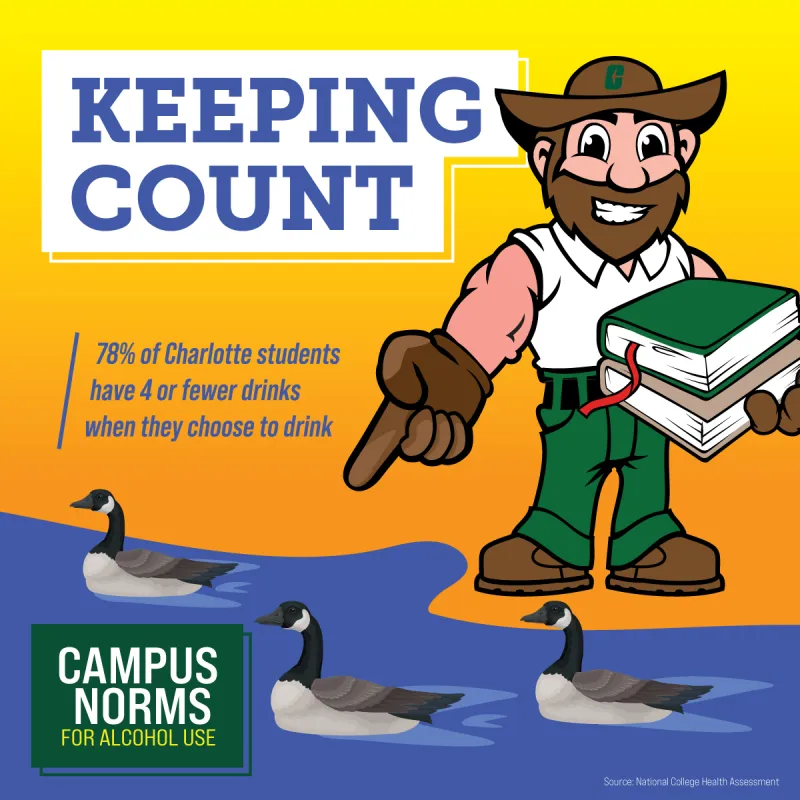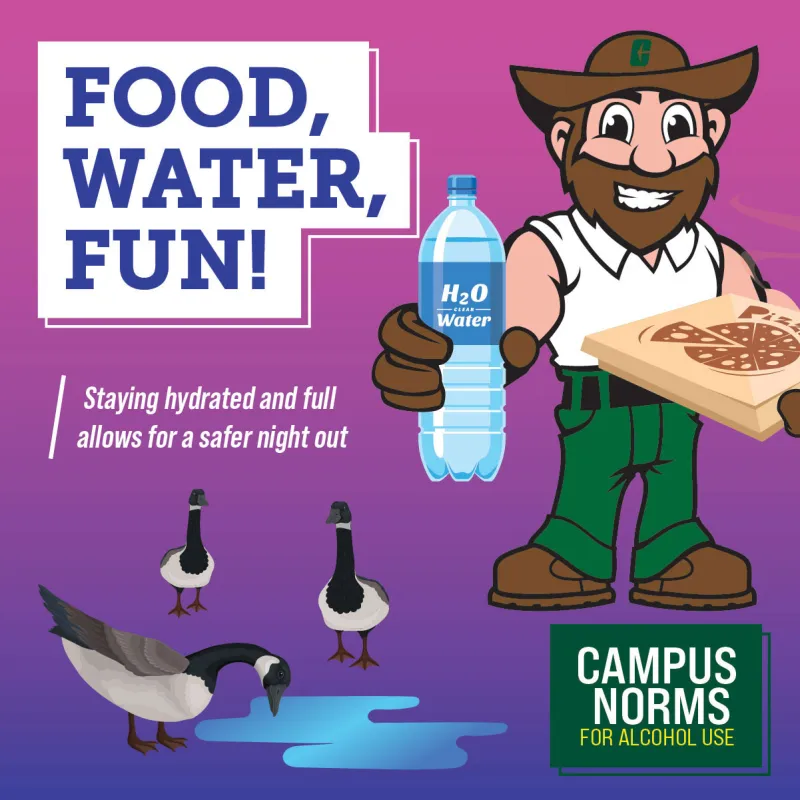People are generally bad at estimating other people's behaviors, yet research shows that our perception of other's behaviors strongly influence our own behaviors. This is especially true when it comes to drinking in college. To help correct these misperceptions and provide helpful information about drinking for students who choose to drink, the Center for Wellness Promotion has developed the Healthy Norms campaign, which highlights campus drinking data and healthier drinking behaviors among UNC Charlotte students. Our goal is that this campaign will help students to get a better understanding of correct campus norms around drinking and identify helpful tips and strategies should they choose to drink alcohol.

If you choose to drink, understanding drink sizes can help prevent over pouring, which allows for a safer experience. 1.5 oz of liquor (one shot), 4 oz of wine, and 12 oz of beer or seltzer equals one standard drink. But keep in mind that some drinks (such as certain hard liquors and some craft beers) contain a higher percentage alcohol by volume (% ABV), so keep that in mind if you choose to drink those beverages (for example, 12 oz of an 8% ABV craft beer is roughly equal to 2 drinks). It is also important to understand that having five or more standard drinks for men and four or more standard drinks for women during one occasion is considered high-risk drinking, also known as binge drinking.
Did you know red Solo cups can help you measure drinks? Each line on a 16 ounce red Solo cup corresponds to certain amounts.
Please visit the National Institute on Alcohol Abuse and Alcoholism (NIAAA) for more information about standard drink sizes and information on college drinking.

Did you know that if you choose to drink, the amount of drinks you can safely consume depends on many factors? Pacing and keeping track of your drinks can ensure you dont go beyond being buzzed. Counting your drinks can be as simple as keeping a mental note, having a friend hold you accountable, keeping bottle caps or can tabs or downloading a drink counting app on your phone. It is important to first understand how many drinks you can have to best keep count. Below are some helpful resources on keeping count:
- Printable drink tracking cards
- Tips on counting drinks from the American Addiction Centers
- Estimated BAC Charts
- Free pocket-sized BAC Cards are available upon request from the Center for Wellness Promotion

If you choose to drink, eating before drinking and staying hydrated can prevent your blood alcohol concentration (BAC) from rising too quickly and prevent you from experiencing alcohol-related harms such as hangovers, blacking out, or vomiting. Why is that? To put it simply, alcohol is absorbed quicker on an empty stomach and water helps counter the dehydrating effects of alcohol. Below are some helpful articles about food, water, and alcohol:

Being buzzed is when your blood alcohol concentration (BAC) is between 0.02-0.08. When buzzed, you can experience euphoria, excitement, elevated mood, and more sociability. This is the zone where you are encouraged to stay if you choose to drink. Any BAC beyond 0.08 can put you more at risk to experience alcohol-related harms and it is also when drinking may be considered high-risk drinking, also known as binge drinking. Below are helpful links about BAC and harms from binge drinking.